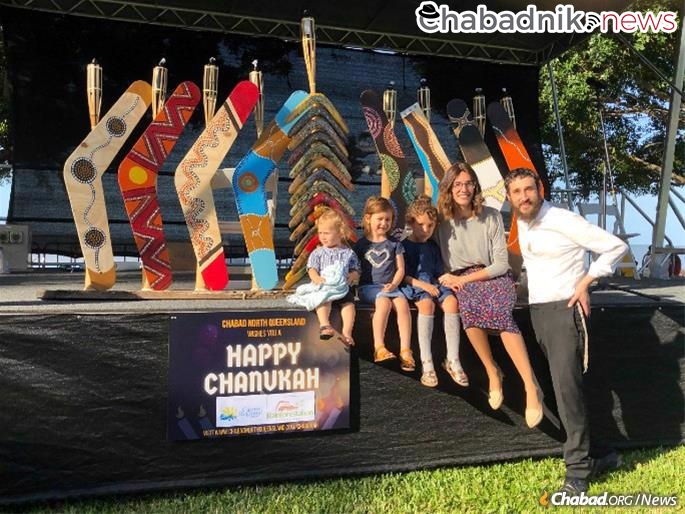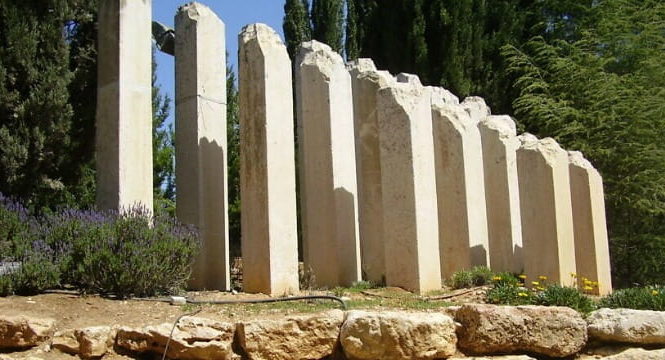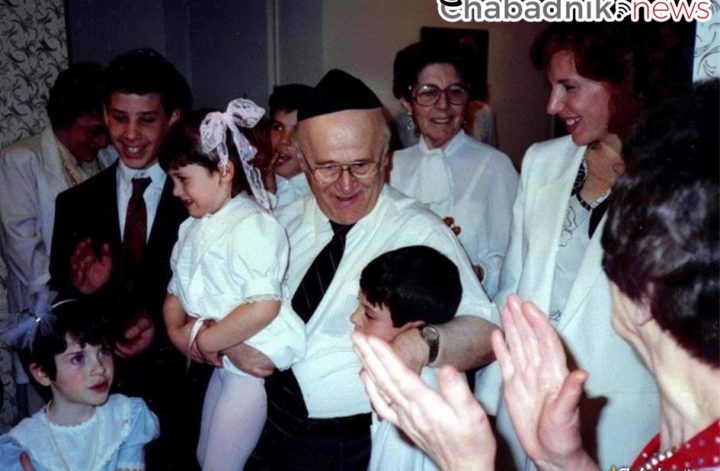For many, the eight-day holiday is a springboard for personal growth in Judaism
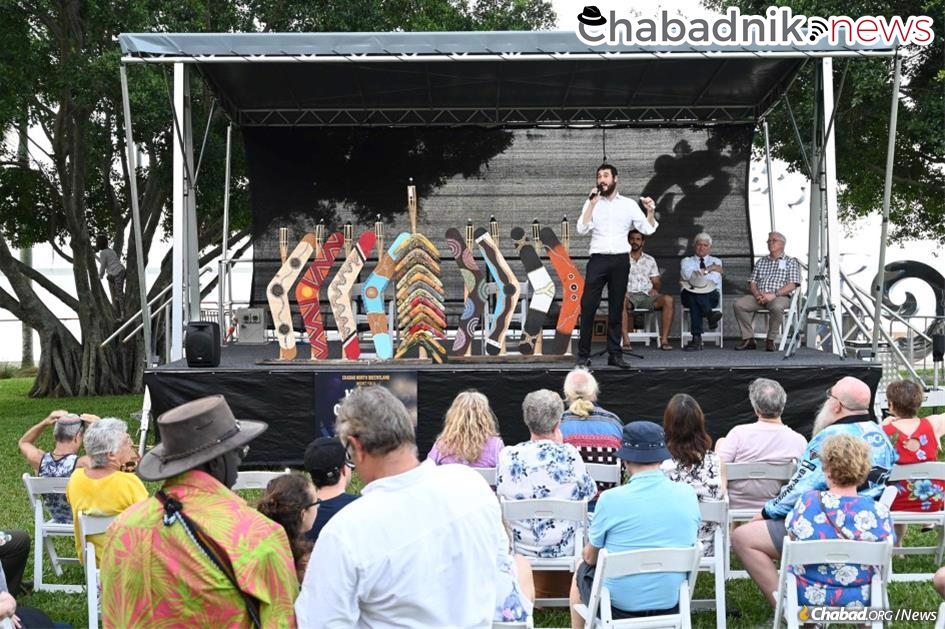
Kim Barlow lives in Malanda, Queensland, a town of 1,985 people in remote northern Australia. Born to a Jewish mother and Indigenous father, she never felt that she completely fit in either world. When she traveled to nearby Cairns during Chanukah of last year, she was drawn to the flames of Chabad-Lubavitch of Northern Queensland’s boomerang menorah. Finally, she felt her identity was embraced.
Seven-thousand miles away and a world apart, Rabbi Zalman Tiechtel, co-director of the Chabad Center for Jewish Life at Kansas University in Lawrence, Kansas, got a knock on his door in mid-November. A fellow introduced himself as Charlie Allen, telling the rabbi that he’d recently moved from Alabama, and noticed the menorah outside the Chabad center as he drove by. After putting on tefillin with the rabbi, he took his own menorah kit to celebrate the upcoming holiday.
The mystical tug of the flickering candles is what the Rebbe—Rabbi Menachem M. Schneerson, of righteous memory—recognized would draw Jews of all backgrounds to further embrace their heritage. “We should listen attentively to what the Chanukah lights are telling us,” the Rebbe wrote in a 1982 public letter, noting that “the mitzvah of the Chanukah lights symbolizes, in a tangible and visible way, all the mitzvot of the Torah … .”
In remote Queensland, Barlow began traveling to Cairns—her nearest Chabad center—to celebrate Shabbat and Jewish holidays, bringing her family along. “I’d found a warm, welcoming Jewish community to be a part of,” she told Chabad.org. Seeing her Indigenous culture represented in a menorah was “really special.”
Meanwhile, in Kansas, after Allen left the Chabad center, he called the rabbi and asked him to send him the Shema prayer. “It’s been so long since I’ve done this, I felt a yearning to connect again,” he told Tiechtel.

‘The Effect of the Light’
The Rebbe first set the Chanukah campaign in motion in 1973, encouraging one and all to share the light of Chanukah with their families and everyone around them. Ever since—and with the Rebbe’s constant guidance and encouragement—Chabad-Lubavitch emissaries worldwide have worked to find big and creative ways to share the Festival of Lights with their fellow Jews and its universal message of light over darkness with humanity at large.
The eight-day holiday—which begins this year on Sunday evening, Nov. 28, and continues through Monday, Dec. 6—commemorates the victory of a small band of Jews over the Syrian-Greek army, who were bent on forcing the Jewish people to embrace Hellenist culture and reject G‑d and His commandments. Against all odds, the faithful but poorly armed band of Jews, led by Judah the Maccabee, drove them out of the land of Israel and reclaimed the Holy Temple in Jerusalem, which the Syrian-Greeks had desecrated.
When they sought to light the Temple’s menorah (the seven-branched candelabrum), they found only a single cruse of olive oil that had escaped contamination by the Greeks. Miraculously, they lit the menorah, and the one-day supply of oil lasted for eight days until new oil could be prepared under conditions of ritual purity. The miracles of the menorah and the incredible Jewish victory over the militarily superior Syrian-Greek army have been celebrated ever since.
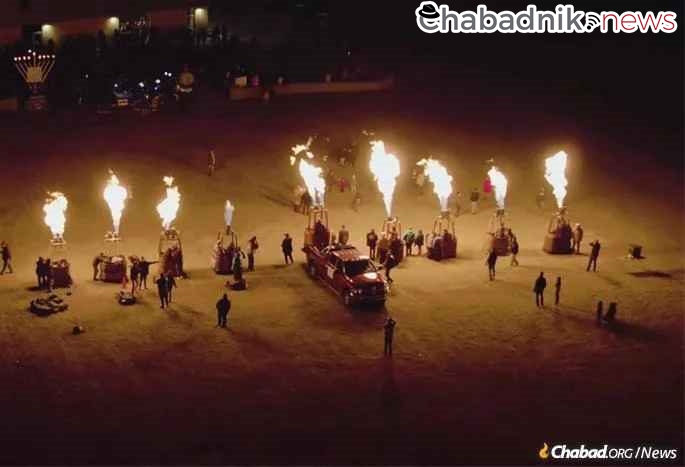
Chanukah 2021 will see Chabad emissaries on six continents and more than 100 countries bring the light and spirit of the holiday to the masses. Chabad will reach 8 million Jews this year, with more than 15,000 large public menorahs erected in a wide variety of public spaces. More than 6,500 menorah-topped cars will hit the streets around the globe, while an estimated 10 million unique visitors will use the practical how-to guides and discover the many layers of meaning at Chabad.org’s popular Hanukkah.org.
On a personal engagement level, Chabad will distribute approximately 64 million Chanukah candles, more than 700,000 menorah kits and 2.5 million holiday guides in 17 languages.
“There is a preeminence in the [mitzvot] connected with lighting candles … in that the effect of the action, the appearance of light, is immediately visible … ,” the Rebbe explained in his public letter for Chanukah 1973. “[T]he mitzvah of kindling the Chanukah light is unique in that it is required to be displayed to the outside … . Thus, every by-passer, including non-Jews, immediately notices the effect of the light, which illuminates the outside and the environment.”
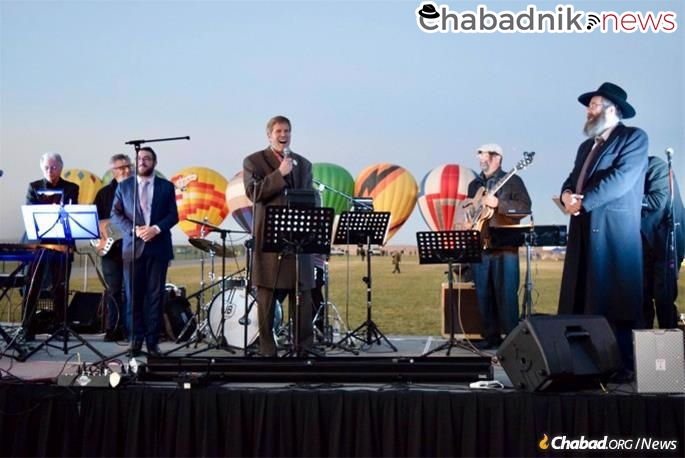
The Rebbe called not only for every Jewish home to be filled with the light of the menorah, but that its flames illuminate the wider world as well. For Chanukah in 1974, a Chabad emissary erected the very first public menorah outside of Independence Hall in Philadelphia, followed the next year by a grand 25-foot mahogany menorah raised in Union Square, San Francisco. By the end of the decade, Chabad emissaries were placing public menorahs on Fifth Avenue in New York City, outside the White House in Washington, D.C., and on the star-studded streets of Los Angeles, adding more cities every year. At the same time, Chabad activists hit the streets to distribute tin menorah and candle kits, giving them out as fast as they could manufacture them. These efforts, along with innovative programs, from Chanukah on Ice to olive-oil press workshops, permanently transformed the breadth and depth of Chanukah observance in the United States and around the world.
Creative thinking and adapting has been a key element in the way the Rebbe and his emissaries brought Chanukah to the forefront of Jewish life. Giving the menorah-lighting a local flavor has helped make Chabad’s events into annual community staples.
Like Rubin’s boomerang-themed menorah in Northern Queensland, Rabbi Chaim and Devorah Schmukler, co-directors of Chabad of New Mexico, in Albuquerque, have taken advantage of the Albuquerque International Balloon Fiesta held in October to inspire their grand menorah-lighting. Fifty-five feet across and looming 70 feet up, Chabad of New Mexico will have nine balloons fired up, casting a beautiful glow over the mountainous backdrop. The Chanukah celebration will take place on the eighth night, with one balloon serving as the shamash, or “helper” candle. The annual event regularly draws crowds of more than 700, with people coming from far beyond Albuquerque. “We once had a bus come from Mexico,” Schmukler recalls. The lively celebration includes a concert, buffet and children’s activities.
The eye-catching display of color lighting up the night sky is at the mercy of the weather, he notes. If the winds aren’t right, the balloons cannot be fired up. But the crowds won’t go disappointed. When inclement weather struck in past years, the crew fired up the propane burners above the wicker baskets without the balloons attached, resulting in a fiery, flaming spectacle.
Drive-In Celebrations Are Here to Stay
Though they hope the weather cooperates in Albuquerque, that attitude of improvisation and facing challenges head on is precisely how Chabad of Port Washington on Long Island, N.Y., filled a park with hundreds of vehicles seating 1,500 passengers for a drive-in Chanukah celebration last year.
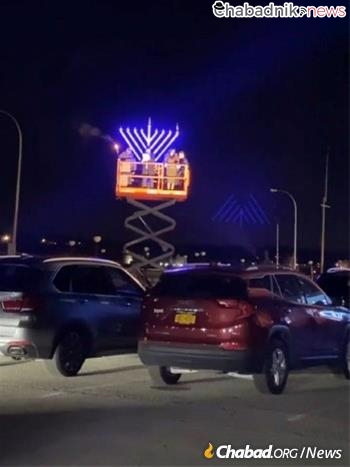
“It’s freezing outside on Chanukah, and at times, it’s been challenging to bring large groups of people out to a menorah-lighting,” explains Rabbi Shalom Moshe Paltiel, co-director of Chabad of Port Washington. Add to that last year’s Covid fears, when he and his wife, Sara, knew many wouldn’t be comfortable attending the outdoor event. That’s when Sara Paltiel came up with a novel idea: a drive-in celebration, where people could stay inside their warm cars and tune in to an FM channel to listen while watching on massive screens. “We had to think out of the box while working with what we had,” she recalls. The Paltiels knew they’d discovered a winning formula when it proved to be even more popular than their past Chanukah events.
“It was the largest Chanukah event on Long Island,” says Rabbi Paltiel. Building on last year’s success, Chabad of Port Washington will once again host the drive-in celebration on the eighth night of Chanukah. To ensure participants have a menorah to light at home from night one, Paltiel says Chabad will deliver a menorah kit to each registered participant’s home in advance of the holiday.
The master of ceremonies at the 60-minute program will be sportscaster Len Berman, a local community member. Cantor Shlomie Rabin will lead the crowd in a Chanukah concert and a tribute to America with the national anthem, followed by a Chanukah game show where participants will call in the answers by phone. The celebration is sponsored by the Peter and Jeri Dejana Foundation, a local philanthropic foundation. The 50-foot-high shamash of the menorah will be lit by police chief James Salerno, marking 100 years of the Port Washington Police District, where Paltiel serves as a chaplain. The celebration will culminate in a 10-minute-long fireworks show.
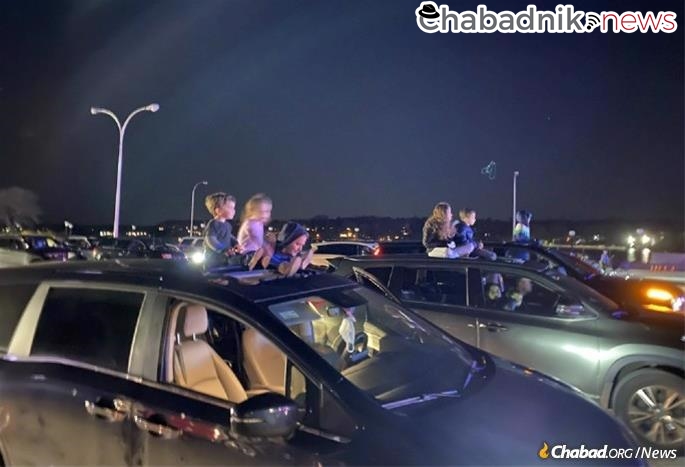
Drive-in events became popular at Chabad centers around the world last year, and they are here to stay. Some will be only drive-in while others will have an outdoor seating option as well. From Boreham Wood, England, to Minneapolis, Minn., this is just one more way that Chabad will reach thousands over the holiday.
“There’s an electricity about the holiday this year,” notes Paltiel. “These are, in many ways, confusing times we live in, but the message of Chanukah is that everything will be OK. It’s time to come out and celebrate.”
